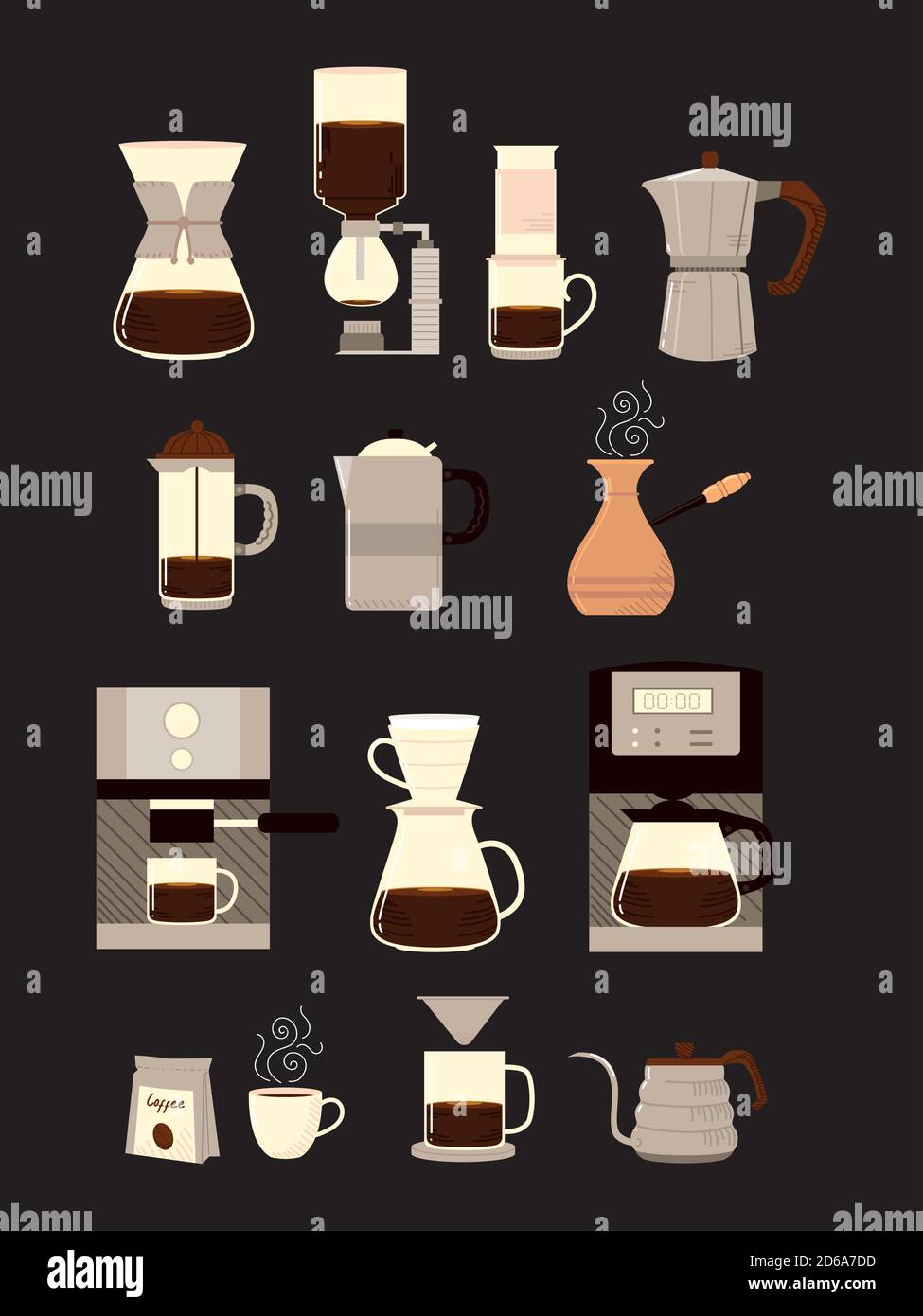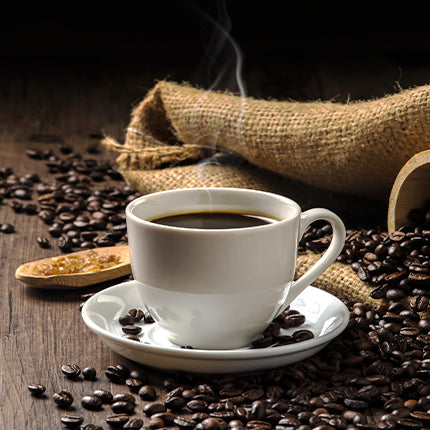The Influence of Various Coffee Brewing Methods on Taste and Scent
The Influence of Various Coffee Brewing Methods on Taste and Scent
Blog Article
The Science Behind Coffee Brewing: Just How Temperature Level and Time Affect Your Drink
Recognizing the scientific research behind coffee developing exposes that temperature level and time are not mere variables however essential components that determine the beverage's flavor account and general top quality. As we check out the nuances of these elements, the question emerges: just how can one successfully equilibrium temperature and time to accomplish that ideal mixture?
The Chemistry of Coffee Removal
The chemistry of coffee removal looks into the intricate procedures that change raw coffee beans right into the aromatic beverage appreciated worldwide. This transformation largely entails the solubility of numerous compounds existing in the beans, which are influenced by elements such as grind dimension, water quality, and the developing technique employed.
Throughout the brewing process, warm water serves as a solvent, extracting soluble substances, consisting of caffeine, sugars, acids, and lipids, from the coffee premises. Each compound contributes to the flavor account, fragrance, and body of the last beverage. Acids are accountable for tangy and brilliant notes, while oils add to an abundant mouthfeel.
The removal procedure is not uniform; different compounds dissolve at different prices. The first phases of brewing extract acids and sugars, causing a positive acidity, while prolonged extraction can result in bitterness due to over-extraction of unwanted compounds. Comprehending these chemical communications is important for maximizing brewing methods, as the balance in between removal time and water temperature level can substantially affect the total quality of the coffee. Ultimately, grasping the chemistry of coffee extraction is crucial to attaining a tasty and all-round mug.
Suitable Brewing Temperatures
Locating the appropriate developing temperature level is necessary for unlocking the full capacity of coffee tastes and scents - coffee brewing methods. Research indicates that the optimum variety for brewing coffee exists between 195 ° F to 205 ° F(90 ° C to 96 ° C) Within this array, the removal process efficiently liquifies the preferable soluble substances in coffee beans, leading to a well balanced and tasty cup
Brewing at lower temperature levels, such as below 195 ° F(90 ° C ), might result in under-extraction, yielding an acidic and weak brew with low-key flavors. Alternatively, brewing at temperature levels surpassing 205 ° F(96 ° C) can bring about over-extraction, creating a bitter and harsh taste because of the excessive dissolution of unfavorable substances, such as tannins.
Furthermore, the perfect developing temperature can vary depending on the coffee bean type and roast degree. Lighter roasts usually benefit from somewhat greater temperature levels to improve their complex taste accounts, while darker roasts might be better suited to lower temperature levels to minimize bitterness.
Eventually, preserving accuracy in developing temperature levels is vital for attaining an unified equilibrium of tastes, ensuring that every mug of coffee supplies a satisfying sensory experience.
Impact of Developing Time
Developing time plays a pivotal duty in establishing the flavor profile and overall quality of coffee. The removal procedure, which affects the preference, scent, and body of the beverage, is mostly based on for how long the coffee premises are in call with water. Much shorter brewing times can result in under-extraction, leading to a weak or sour taste, as inadequate soluble compounds are dissolved. Conversely, long term developing can result in over-extraction, where undesirable substances are launched, leading to a bitter or astringent preference.
Optimal developing time differs depending upon the method made use of and the grind dimension of the coffee. A French press typically calls for regarding 4 minutes, while coffee extraction is usually finished within 25 to 30 secs. It is necessary to calibrate developing time in conjunction with various other variables, such as water temperature and coffee-to-water proportion, to achieve the wanted flavor profile.
Recognizing the effect of developing time allows coffee enthusiasts to improve their brewing techniques, inevitably enhancing the sensory experience of their mug (coffee brewing methods). With careful interest to this variable, one can open the full capacity of the coffee, revealing its one-of-a-kind attributes and nuances
Developing Methods and Their Results

For circumstances, approaches like French press and cold brew enable a longer steeping time, causing a fuller body and robust flavor as a result of raised removal of oils and soluble solids. Conversely, espresso developing utilizes high stress and a shorter removal time, producing a focused shot that emphasizes extreme tastes and an abundant crema.
Pour-over methods, such as Chemex or V60, supply a more controlled removal process, permitting the maker to manipulate flow rate and water distribution, which can enhance brightness and clearness. Percolation approaches cycle water via the coffee premises several times, leading to a more powerful, typically bitter flavor.
Lastly, the usage of paper filters versus steel filters can likewise affect the final preference; paper filters generally yield a cleaner mug by capturing oils and fine particles, while steel filters enable more oils to pass through, adding to a fuller mouthfeel - coffee brewing methods. Recognizing these nuances can elevate the coffee experience significantly
Tips for Developing Your Mixture
A well-executed brew can transform also the easiest coffee into an impressive experience. To accomplish this, attention to detail is important. Beginning with his explanation high-grade, fresh baked beans, as their flavor profile diminishes with time. Grind the beans prior to brewing to make best use of freshness, ensuring the grind dimension matches your brewing approach-- coarser for French press and finer for espresso.
Water high quality plays an important duty; use filteringed system water totally free from contaminations. The ideal developing temperature level ranges between 195 ° F and 205 ° F(90 ° C to 96 ° C ) Also hot can swelter the coffee, while also amazing may under-extract flavors.
Timing is similarly important. For immersion techniques, soaking for 3 to five minutes is optimum, whereas drip methods commonly take around 5 mins. Try out mixture times to find your recommended strength.

Final Thought
In summary, the detailed partnership between temperature and time is extremely important in the coffee developing process. Understanding these clinical see here principles encourages people to refine their developing methods, ultimately leading to an extra well balanced and satisfying coffee experience.
Comprehending the science behind coffee developing reveals that temperature level and time are not simple variables but crucial aspects that dictate the drink's flavor account and general quality. Recognizing these chemical interactions is crucial for enhancing brewing methods, as the equilibrium between removal time and water temperature can dramatically influence the total quality of the coffee.Developing time plays a pivotal function in identifying the taste account and general top quality of coffee. By focusing on these aspects-- bean top quality, grind size, water temperature level, steeping time, and ratio-- you can boost your coffee brewing process, Learn More Here resulting in a constantly superior cup.
In recap, the intricate connection in between temperature and time is extremely important in the coffee brewing process.
Report this page